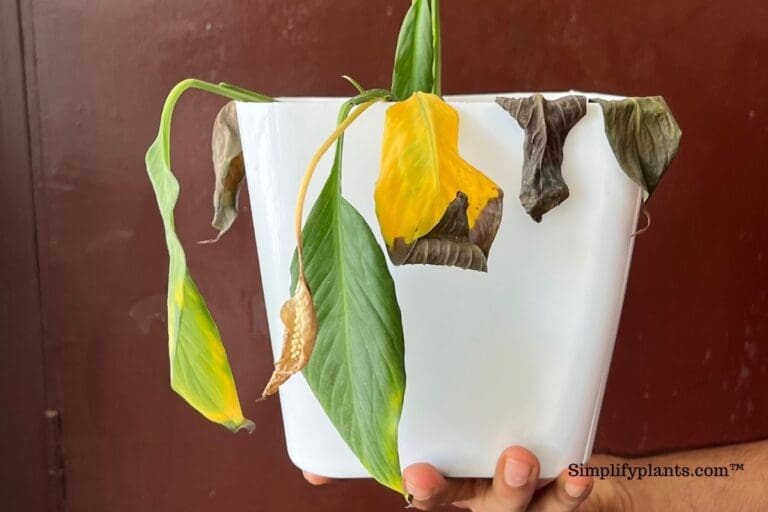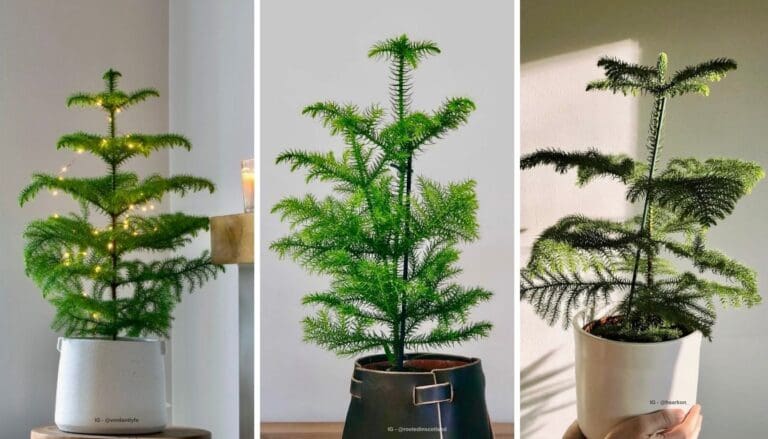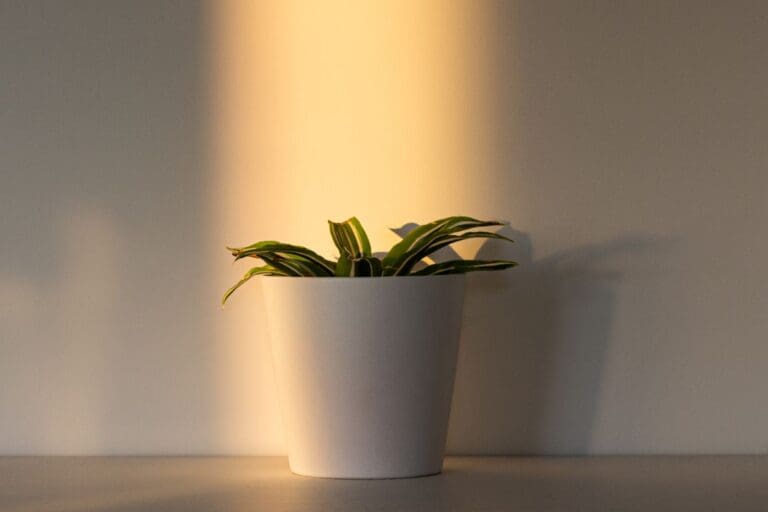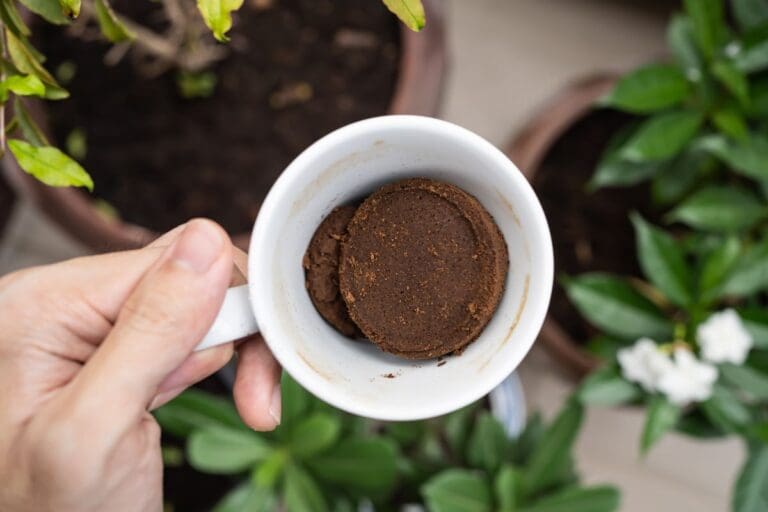Why Is My Indoor Plant Sticky? (Causes+How To Fix)
The beautiful green leaves of your indoor plants add a beautiful look to your living space. However, the sticky leaves, when touched, give a mixed feeling of both irritation and disgust. It is crucial to know why is your indoor plant sticky so that you can deal with the situation accordingly.
In general, indoor plants have sticky leaves due to pest infestation on the plant. When the pests suck out the sap from the plants, they secrete honeydew, which makes the leaves sticky. Some plants also release nectar to attract insects for pollination, which can make the leaves sticky.
If your indoor plant leaves have become sticky, this article will help you with the reasons and how you can eliminate this stickiness from your plant.

Please note: Simplify Plants is reader-supported. Some links in the post are affiliate links and I get a commission from purchases made through links in the post.
Why are the indoor plant leaves sticky?
First, speaking of pests, three types of bugs can make the leaves dull and sticky.
Whenever you find your houseplant leaves dull and sticky, try checking for pest infestation, and you might find them under the leaves or near the stems.
These insects suck out the sap from the plants and leave behind a sticky substance called honeydew. This further invites many other insects into the plant.
Another reason is nectar. It is natural as plants produce nectar to attract insects like bees and butterflies for pollination and reproduction. This nectar, too, will give your plant leaves a sticky feeling.
Let us discuss this in a bit more detail.
Secretion from insects (Honeydew)

Insects or bugs, mostly mealybugs, aphids, and scales, are the common reasons behind sticky leaves. They are the ones who leave behind honeydew.
They feed on the sap and nectar of the plant by striking on the plant’s phloem, a tissue that transfers sugar and other metabolic compounds to other portions of the plants.
These insects suck out the sap of the indoor plant leaves and then secrete the honeydew, which is the poop they release after feeding and digesting all the sugars from the plant.
This honeydew stays on the plant leaves, and sometimes, it will even drop to the lower part of the leaves.
This will further attract ants and many other insects in the plants. The infestation will form mold and other fungi in the plant, harming the plant to an extreme level.
It is necessary to clean the leaves and get rid of this stickiness as soon as possible to prevent other infestations.
Secretion from plants (Nectar)
Plants release nectar meant to attract bees and butterflies to encourage pollination and plant reproduction.
It is said that nectar production helps in protecting the plant. Plants have secretory structures known as extrafloral structures. These glands are present all over the non-flowering portions of the plant.
These glands release nectar to attract ants which can protect the plant from herbivores. In such conditions, plants secreting sap to prevent insects is a way of survival.
When the insects think of attacking the plant, the plant starts producing nectar. This situation is not at all ideal for the bugs, and thus they start leaving.
On the other hand, the plant’s flowering parts release nectar to attract bees and butterflies for pollination.
Some indoor plants produce nectar for attracting insects as food. Mostly, the indoor carnivorous plants do this, like sundews or pitchers. Their goal is to attract insects for survival.
When nectar is secreted, it remains on the leaves and stems. This further becomes oxidized, giving a brownish look. Now insects arrive to feed on the nectar and get trapped and eaten by the plant.
The uninvited guests
It is not a good idea to keep your plant leaves untreated. The brownish look after secretion occurs because the organic sugars in the nectar get oxidized after secretion.
The honeydew secreted can create fungus infestation upon the secretion, giving it a dark color.
Leaving this honeydew and nectar can cause a lot of problems. Not only do they remain over the leaves, but they also start dropping over your floor.
If not treated within time, it will attract many other insects like ants or lizards, which can be harmful to the plants.
That is why it is necessary to remove the sugary stickiness from the floor and the leaves before any such infestation starts happening.
Bacterial infections
Sometimes, the sticky leaves can be the cause of bacterial and fungal infections too. These infections happen when the leaves get injured by cuts or breaks, and the injured portions get exposed to air.
A common infection is erwinia infection. The signs are droopy leaves and tuber rot, releasing a foul smell. The bacterium remains mostly in soil and gets increased by scorching weather, over-fertilizing, and a heavy soil mix, increasing humidity.
This bacterial infection is sometimes treated as a fungal infection, which is wrong. The only way to get rid of this infection is by removing the affected leaves from the plant. However, pruning might cause another injury if not done carefully.
You can try using cinnamon oil directly to the affected area. This will help in curing the injuries.
How to get rid of stickiness from the indoor plant leaves?

It is crucial to get rid of the stickiness of your indoor plant leaves. This will prevent attracting pests and insects and keep your leaves clean and healthy. Let us see how you can get rid of sticky leaves.
Treating and preventing scales
Scales will not only make the leaves sticky but will also harm the plant. But, they, of course, will slow down the plant’s growth. That is why it is essential to remove them immediately. Removing them is pretty tricky.
Finding them is a bit of work as they mostly remain underside the leaves. You can know about their presence by the honeydew they leave behind after feeding on the nectar.
Check under the leaves whenever you find that the plant leaves are starting to accumulate dust and feel sticky. You will see small light and dark brown or black protrusions on the underside of the leaves; you know that scales are attacking your plant.
Scales are fussy because they have a protective outer shell that protects them from insecticidal sprays. You will need effective ways to remove them. To get rid of them:
- You can apply horticulture oils or soaps to the plants to suffocate the scales. The oil and soap will help make a layer over their shell, which will cut off their air supply. The scales without air will start suffocating and die.
- You can weaken their shells by using dish wash soap, water, or rubbing alcohol.
- Mix 2 tablespoons of dish wash soap with 1 gallon of water. Use it to rub on the top and bottom of the leaves. After that, wash your plant with plain water.
- Damp the cotton with rubbing alcohol and run over the scales. Avoid the leaves. Before doing this, put a paper over the soil surface so that the scales fall over the paper.
- You can use tweezers to remove the scales from the leaves one by one. Collect them in a sealed container and then discard them.
To prevent scales attack, wash your plant with soap and water mixture once a week. Keep checking your plant daily, mainly the underside of leaves.
Identifying the symptoms of pest infestation beforehand and removing them as soon as possible saves the plant from such uncomfortable situations.
Treating and preventing mealybugs
These are very tiny white bugs covered with white cottony wax all over the body. They are too hard to deal with, but you can remove them from your indoor plants with some effort.
- Before starting any treatment, wear gloves and a mask for your protection.
- If the infestation is not much, try using dish wash soap to treat the plant. Mix 2 tablespoons of dish wash soap with 1 gallon of water and clean the plant with the mixture using a cloth. This will suffocate them and kill them.
- If the infestation is medium, neem oil will help solve the issue. It is an organic oil with anti-bacterial and anti-insecticidal properties and is not harmful to plants.
- You can wet a little piece of cloth and wipe these bugs off from the plant. After removal, spray the whole plant with neem oil. This will help in preventing the bugs from further attacks. Keep spraying once a week until the problem is resolved.
- If the infestation is high and severe, neem oil and soapy water will not help. You have to use rubbing alcohol or pesticides to treat your plant.
- Dab cotton in alcohol and wipe away the bugs. After removing, spray the plant with diluted alcohol mix, repeat this two times a week until all the bugs are removed.
- If you want to use pesticides, consult with experts, read the instruction carefully on the product’s label and then use it.
- For prevention, you can continue spraying neem oil every week. There is no other way of obstructing them from further appearance.
Treating and preventing aphids
Aphids are sap-sucking bugs primarily found in plants during the growing season, and they grow at a much faster rate. The only preventive method is to stop stressing your plant and look after your plant well.
Keep watching out daily for any pest infestation in your houseplants. Whenever you find these bugs, treat them as soon as possible. For treating:
- You can keep mint and dill weeds near your houseplants. The ladybugs will get attracted by these herbs and will feed on the aphids. This is both a treatment and prevention.
- You can handpick the bugs to remove them. Make sure to wear gloves.
- If the aphids heavily infest some leaves, remove the leaves and drop them in boiling water. This will permanently kill the pests, and they won’t come back again to infect the plant.
- If the situation is worse, you have to use aphid controlling pesticides. Keep spraying until the problem is resolved.
- Use dish soap to remove them. Mix one tablespoon of soap with a quarter cup of warm water and regularly spray it to the plants. Keep it for 10 to 15 minutes, and then rinse it with plain water.
Preventing bacterial infections
Since bacterial infections can make the leaves of your houseplants sticky, you can opt for these preventive measures.
- Providing a lot of sunlight to your plant will help eliminate bacteria and fungus.
- Try to maintain the correct pH level in the soil.
- Ensure that the soil is well-aerated and rich in nutrients.
- Sterilize all the garden tools and materials before and after using them.
- Avoid too high or low humidity. Do not expose your plant to high temperatures (over 77°F) and low temperatures (below 50°F).
- Avoid using earthenware pots or compost of infected plants. Disinfecting the compost might not remove all the fungus and bacteria altogether.
- Do not stress your plant by overwatering them.
How to clean the sticky leaves on indoor plants?

You need to clean the leaves to avoid dust accumulation or further insect infestation. For cleaning:
- Mix 1 teaspoon of dish detergent with 1 quarter of warm water.
- Damp cotton in the mixture and wipe the sticky leaves very well from all sides.
- If the mentioned dish detergent is not available, you can use rubbing alcohol to wipe the leaves.
Final words
Sticky leaves do not cause much harm, so you do not have to prune them off like other leaf problems. You, however, need to remove the stickiness from the leaves to prevent bug or insect infestations.
Use neem oil, rubbing alcohols, dish wash soaps, and pesticides alternatively. If one doesn’t work, go for the other. Take care of your plant and keep them in check daily to identify the problems on time.
Treating your plant’s problem in the initial stages will keep them healthy and also extend their lifespan. Make sure you follow the preventive measures to avoid further stickiness of the plant leaves.
Source: University of Illinois, Growing Indoor Plants with Success, Agriculture, and Natural Resources, University of California, Missouri Botanical Garden.
Recommended Garden Supplies
| Product Image | Our Recommended Gardening Supplies | Check Offers! |
|---|---|---|
Top Top
Top
Top
Top
Top
Top
Top
Top | rePotme Houseplant and Tropical Classic Potting Soil Mix | Check Offer On Amazon |
 Top
Top
Top
Top
Top
Top
Top
Top | Espoma Organic Indoor Plant Food | Check Offer On Amazon |
 Top
Top
Top
Top
Top
Top
Top
Top | GooingTop LED Grow Light 6000K Full Spectrum Clip Plant Growing Lamp | Check Offer On Amazon |
 Top
Top
Top
Top
Top
Top
Top
Top | Soil Moisture Meter | Check Offer On Amazon |
 Top
Top
Top
Top
Top
Top
Top
Top | Govee Hygrometer Thermometer, Bluetooth Enabled! | Check Offer On Amazon |
 Top
Top | LEVOIT Humidifiers for Large Room(Best For Plants) | Check Offer On Amazon |
 Top
Top
Top
Top
Top
Top
Top
Top | Upgraded DIY Automatic Drip Irrigation Kit, 15 Potted Houseplants Support | Check Offer On Amazon |
 Top
Top
Top
Top
Top
Top
Top
Top | Stainless Steel Heavy Duty Gardening Tool Set | Check Offer On Amazon |
 Top
Top
Top
Top
Top
Top
Top
Top | Bonide Insecticidal Soap | Check Offer On Amazon |
 Top
Top
Top
Top
Top
Top
Top
Top | Bonide 32 oz Spray Neem Oil for Organic Gardening | Check Offer On Amazon |
 Top
Top
Top
Top
Top
Top
Top
Top | Garden Safe Fungicide | Check Offer On Amazon |






